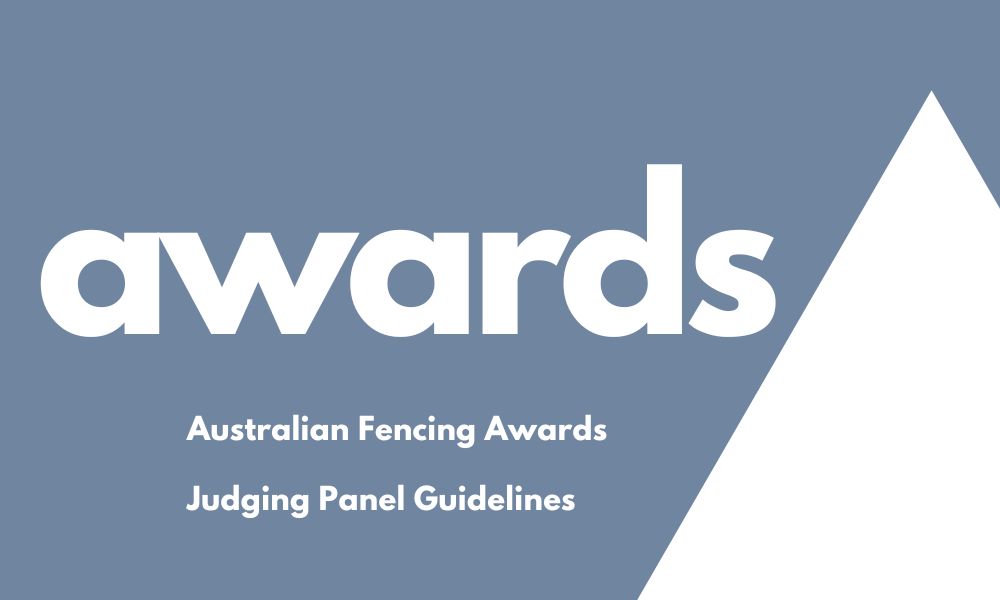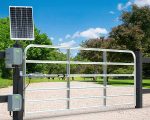Guidelines for Judging Panel Volunteers for The Australian FENCING Awards.
1. Introduction
The Australian FENCING Awards recognise excellence, innovation, and craftsmanship in the fencing and gate industry. A structured points-based system has been implemented to ensure a fair, transparent, and consistent judging process. This document provides comprehensive guidelines for the Judging Panel to maintain the integrity and credibility of the awards.
2. Role of the Judging Panel
The role of the Judging Panel is to assess and score entries fairly and consistently based on the established points-based criteria. Judges are expected to:
- Review each submission thoroughly.
- Score each entry according to the assigned weightings per category.
- Provide constructive feedback where applicable.
- Ensure impartiality and eliminate bias.
- Maintain confidentiality regarding the entries and results until officially announced.
3. Judging Process Overview
3.1 Entry Evaluation
Each judge will independently evaluate submissions using a structured scoring sheet. The evaluation process consists of the following steps:
- Review the entry submission (including photos, descriptions, testimonials, and supporting documentation).
- Assess each criterion using the predefined scoring system (1–10 or 1–20, depending on the criterion weight).
- Provide individual scores per category.
- Submit the completed scorecard by the specified deadline.
- Participate in a review meeting (if necessary) to resolve ties or discuss final rankings.
3.2 Scoring Breakdown
Entries are assessed on a total score of 100 points, distributed across category-specific criteria. Judges must refer to the official Australian FENCING Awards Points-Based Judging System document for weightings assigned to each category.
The general framework includes the following criteria:
| Criterion | Description |
|---|---|
| Innovation & Design | Creativity, unique features, and integration of new technologies or materials. |
| Functionality & Effectiveness | How well the fence or gate serves its intended purpose (security, safety, aesthetics, etc.). |
| Quality of Workmanship | Precision, durability, and overall finish of the installation. |
| Use of Materials | Appropriateness and craftsmanship in material selection. |
| Aesthetics & Visual Appeal | Design harmony, alignment with surroundings, and overall appearance. |
| Technical Complexity | Engineering challenges and execution of intricate elements. |
| Sustainability & Environmental Impact | Use of eco-friendly materials and long-term sustainability. |
| Client Satisfaction & Testimonials | Feedback from clients and end-users on project impact. |
| Safety Considerations | Compliance with safety standards and practical safety features. |
| Project Challenges Overcome | Problem-solving, unique site constraints, and innovation in response to challenges. |
4. Scoring Procedure
- Each judge will independently assign scores to entries.
- Scores will be compiled and averaged to determine finalists and winners.
- A review meeting will be held for any necessary discussions on close-scoring entries or discrepancies.
- The highest-scoring entry in each category will be declared the winner.
- Tiebreakers will be resolved based on the highest score in “Quality of Workmanship”; if still tied, a further comparative review will be conducted.
5. Judging Ethics and Confidentiality
All judges must adhere to the highest ethical standards to maintain the credibility of the awards. This includes:
5.1 Impartiality & Conflict of Interest
- Judges must declare any potential conflicts of interest (e.g., if they have been involved in a submitted project).
- Judges should recuse themselves from evaluating entries where a conflict of interest exists.
- Scoring must be based solely on the merit of each entry, with no external influence.
5.2 Confidentiality
- Judges must not disclose entry details, scores, or deliberations to anyone outside the judging panel.
- Finalists and winners must remain confidential until officially announced.
- Any notes or scoring materials should be securely stored and/or disposed of properly after judging concludes.
5.3 Professional Conduct
- Judges must remain objective, respectful, and constructive in their evaluations.
- Feedback should be fact-based and fair, offering helpful insights to participants.
- Any bias or preference towards specific brands, companies, or individuals is strictly prohibited.
6. Timeline and Deadlines
The judging process will follow a strict timeline to ensure fairness and efficiency.
All judges must submit their completed scoring sheets by their assigned deadline to ensure timely results.
7. Post-Judging Review & Feedback
Once the winners are determined, a post-judging review will be conducted to:
- Evaluate the effectiveness of the scoring system.
- Gather feedback from judges on potential improvements for future awards.
- Provide participants with feedback (if applicable) to help them understand their scores and areas for improvement.
8. Contact & Support
For any queries regarding the judging process, scoring system, or conflicts of interest, judges can contact Fencing Industry Australia








